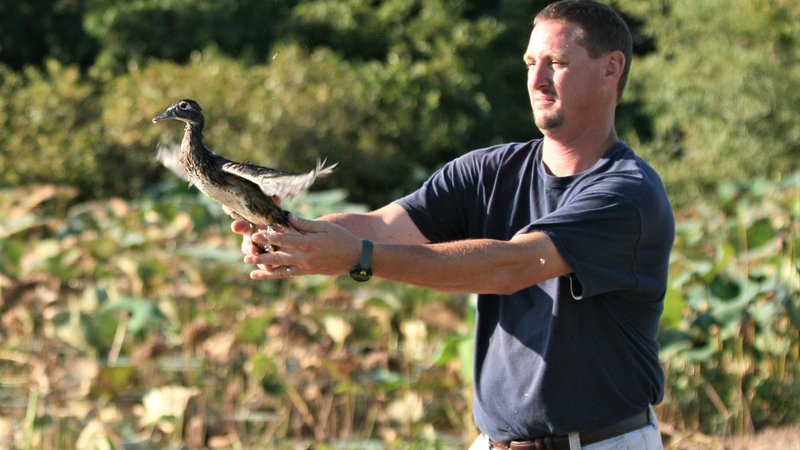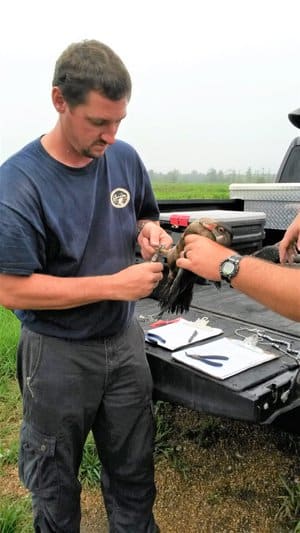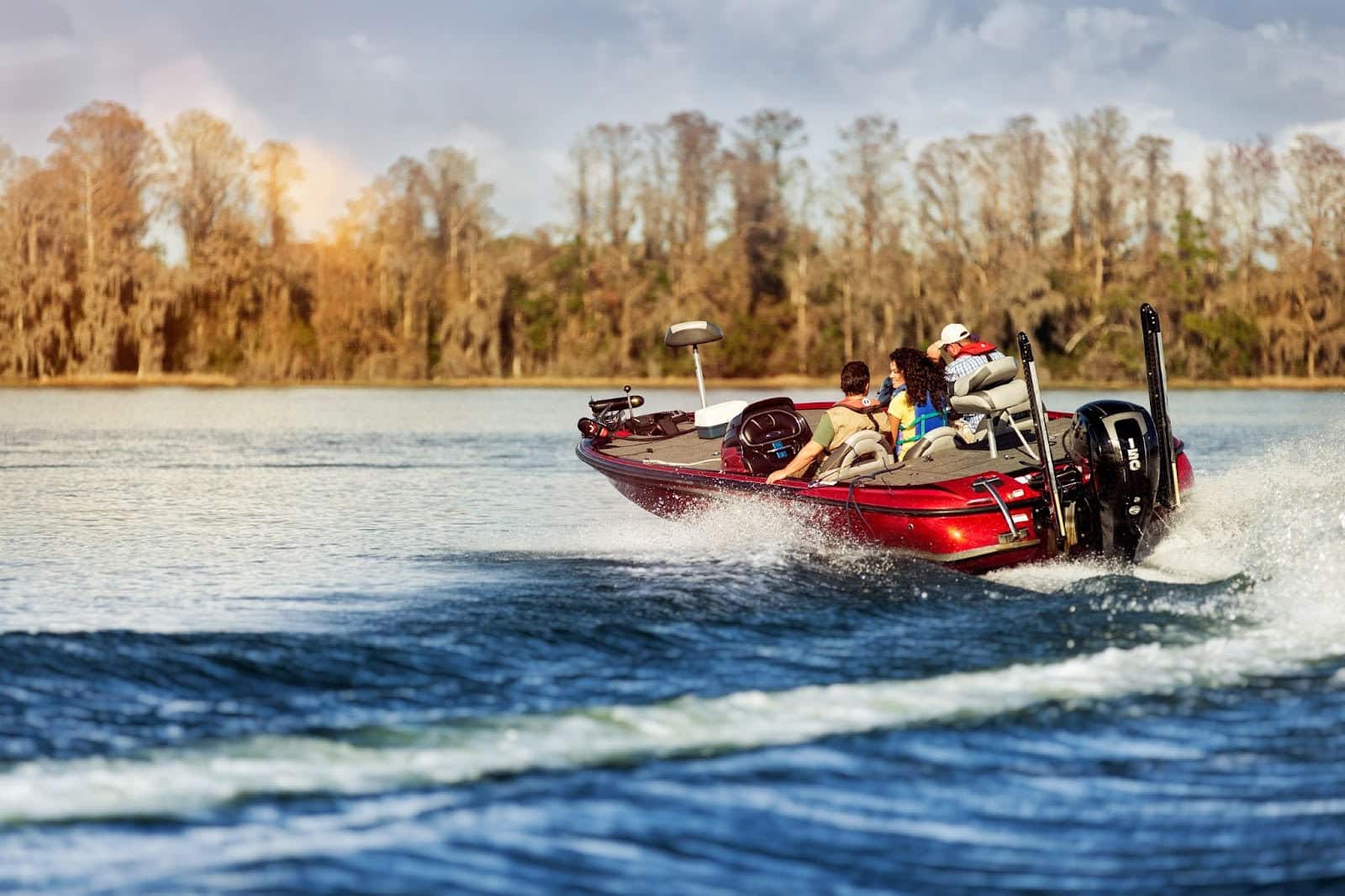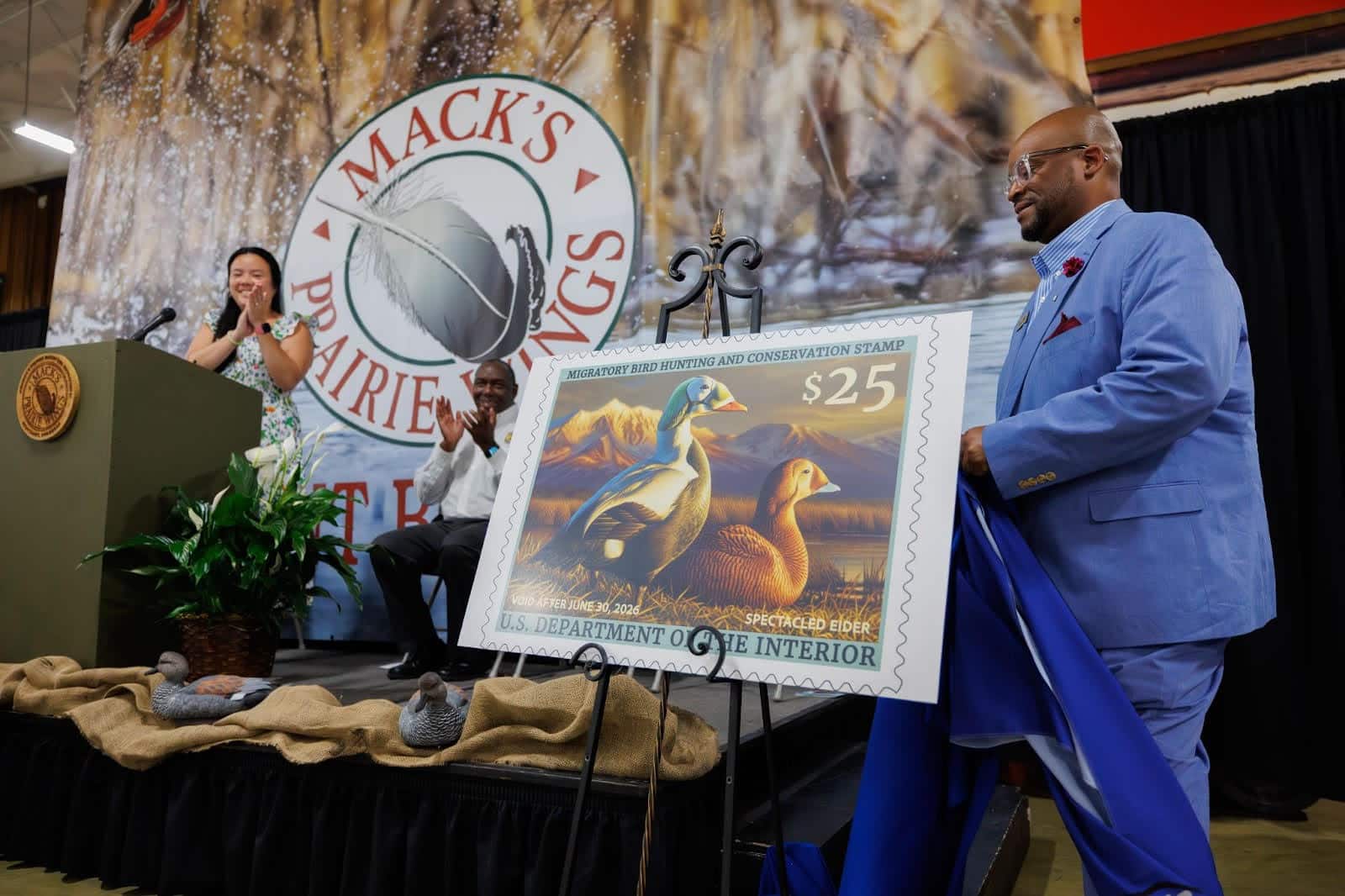Carbaugh Goes Airborne in Study of Waterfowl
BY Jim Harris
ON 12-29-2021

Dec. 29, 2021
Jim Harris
Managing Editor Arkansas Wildlife Magazine
JONESBORO – Being flown 500 feet off the ground in a single-engine Cessna 172, counting ducks for the all-important waterfowl aerial surveys the Arkansas Game and Fish Commission conducts each winter, is just one of the many job duties Jason Carbaugh enjoys as a wildlife biologist.
“Heights and roller coasters have never bothered me,” he said. Before he joined the AGFC in 2004, he already had experience during college working with the Missouri Department of Conservation and flying with a biologist, and the interest in wetlands and waterfowl kept building from there.
Carbaugh, assistant regional supervisor in the AGFC’s district office in Jonesboro (Region 1) and part of the AGFC’s Waterfowl Team that reviews regulations and conducts aerial surveys, says a lot of preparation goes into the survey work, including working with a software program to enhance their survey-estimating skills, before the team flies their east-west transects to not only estimate the number of waterfowl, but determine the species.
“We’ll fly three or four surveys during the season,” said Carbaugh, who has flown surveys for 15 years. “I cover from Marianna, just south of I-40 to Searcy, then everything north to the Missouri state line.”
The team of Carbaugh, Cameron Tatum, Jason “Buck” Jackson and Alex Zachary canvassed the state in early December for the most recent aerial survey. They’ll be back in the sky the week starting Jan. 3 for the annual Midwinter Survey.
Carbaugh handles each survey in his quadrant in about two days, dawn to dusk, compiling the information to send along to Luke Naylor, the AGFC’s waterfowl program coordinator.
His waterfowl work goes much beyond aerial surveys. Each year, Carbaugh participates with biologists and volunteers from the Mississippi Flyway to assist with the U.S. Fish and Wildlife Service’s Migratory Bird Parts Collection Survey also known as the “Wingbee.” Wingbees are conducted in each of the four migration flyways. The biologists examine clipped wings from harvested ducks, tail feathers and the last 3 primary wing feathers from harvested geese that have been submitted by hunters, randomly selected by the USFWS, to provide a waterfowl harvest estimate.
“It takes a full week,” he said of the Wingbee. “We usually examine more than 20,000 wings in a single week. I believe the most I’ve helped examine was around 26,000 waterfowl parts.” The collected information gives the U.S. Fish and Wildlife Service an estimate of the species, sex, and age composition of the harvest. It also provides information on how harvest changes over space and time. Harvest estimates are even broken down to the state level.”

Carbaugh notes that his region is “blessed with many WMAs that provide great waterfowl habitat and duck hunting opportunities.” In his region, the AGFC provides public waterfowl hunting opportunities at Big Lake WMA, Dave Donaldson Black River WMA, Shirey Bay Rainey Brake WMA, St. Francis Sunken Lands WMA and Earl Buss Bayou DeView WMA. Earl Buss Bayou DeView WMA is where Carbaugh first started in his AGFC career as a field biologist before promotion to assistant regional supervisor.
Rainfall is a key factor in flooding most of the AGFC’s GTRs. When rain and cold fronts come, usually in December, Earl Buss Bayou DeView as well as the adjacent private agricultural fields will be flooded. Usually we get a good push of mallards before Christmas and it can be a good place to hunt,” he said. “(Earl Buss) may not seem like a big place at 4,500 acres, compared to the others, but it can be good at times.
“The other areas are much bigger and people can spread out. They also have rest areas with food resources associated with them. The St. Francis River can be good when the fields start freezing up and it has running water. That’s when people generally have good success there.”
Carbaugh, 42, grew up in southeastern Missouri, first Kelso and then Perryville, and attended Southeast Missouri State University in Cape Girardeau for his bachelor of science degree in biology, before obtaining a master’s degree at Tennessee Tech University. He worked on a Canada goose nesting ecology study within the Upper Cumberland Plateau in central Tennessee.
He returned home to work part time for Missouri’s Department of Conservation for a year before joining the AGFC 17 years ago. His wife, Nicole, and two children live in Paragould. Daughter Shelby, 14, used to duck and dove hunt with Carbaugh, but her interests have moved away from hunting. She still enjoys camping, fishing and the outdoors. Son Tyler, 8, loves any kind of hunting, he said. Carbaugh says the family passion would be waterfowl and turkeys.
He oversees the banding of wood ducks and mourning doves in his region. “I’m happy to say almost every year we have reached our banding quota,” he says, which is 100 each of wood ducks and doves. He also assists with banding more than 250 Canada geese in northeast Arkansas.
His work extends beyond waterfowl. He serves on the regulations review committee and assists with Captive Wildlife Facility inspections. Also, he’s the regional Burn Boss, organizing prescribed burns on WMAs with other regional personnel, an effort by the AGFC that provides a big boost for wildlife habitat in upland areas.
Recent News

Watch your wake
Jul. 2, 2025
Subscribe to Our Weekly Newsletter E-mails
Don’t miss another issue. Sign up now to receive the AGFC Wildlife Weekly Newsletter in your mailbox every Wednesday afternoon (Waterfowl Reports are published weekly during waterfowl season and periodically outside the season). Fishing Reports arrive on Thursdays. Fill in the following fields and hit submit. Thanks, and welcome!

